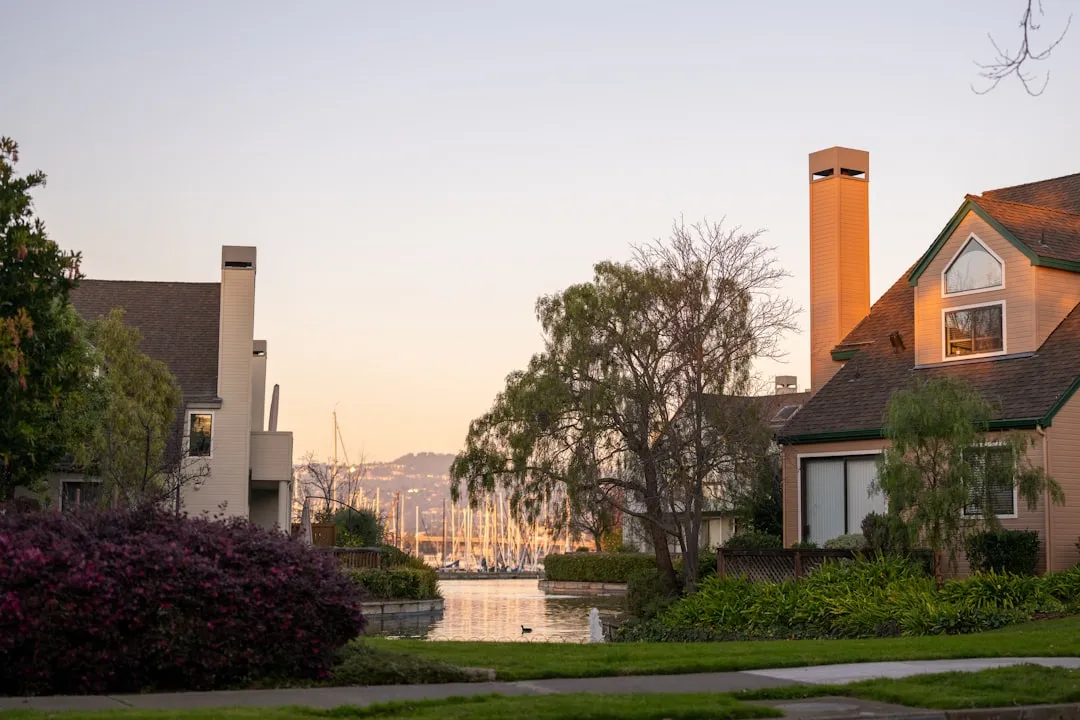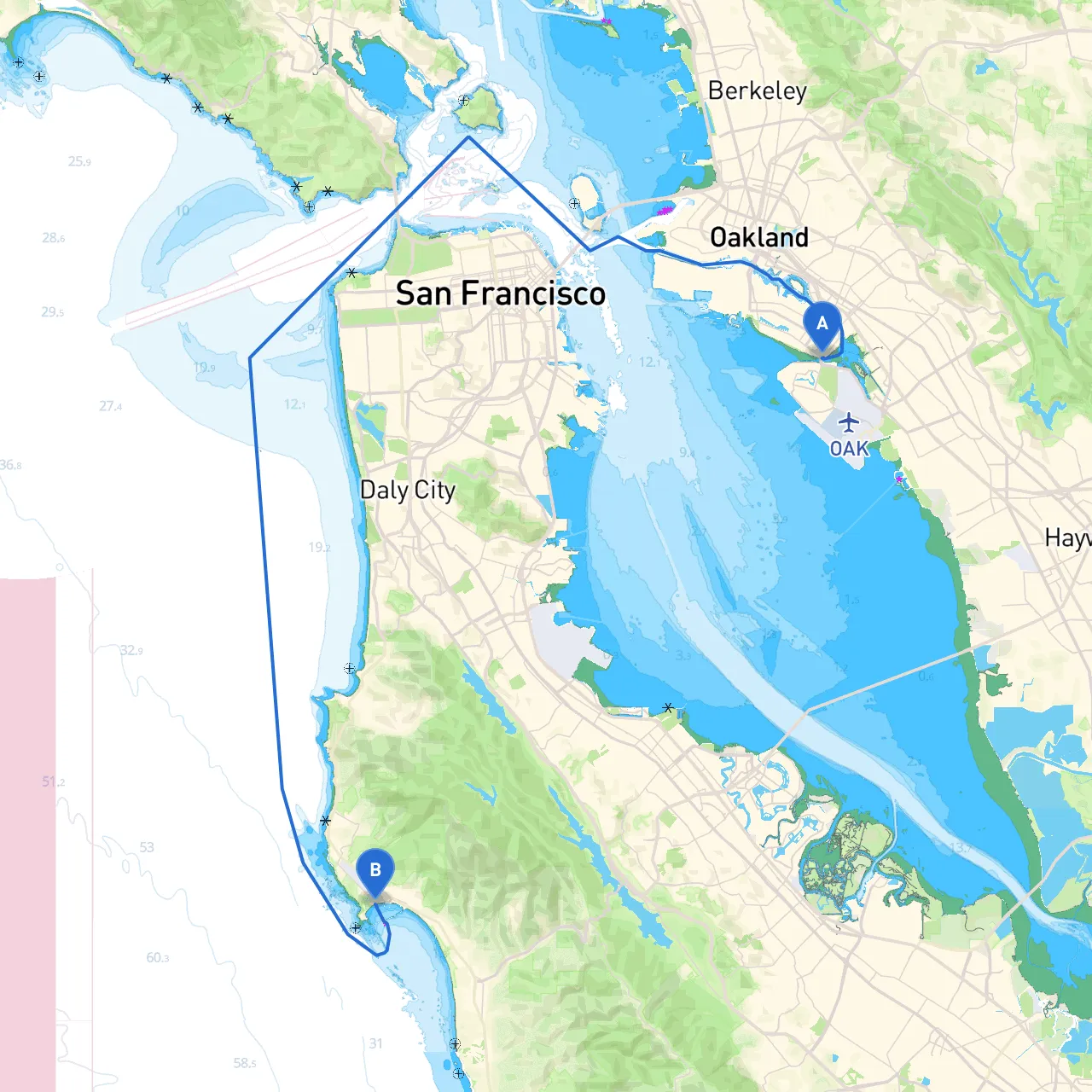

Pilotage Plan from Alameda, CA to Half Moon Bay, CA
Route Overview:This route takes you on a splendid maritime journey along California’s picturesque Bay Area and coastline, perfect for skilled boaters seeking an exhilarating day trip or weekend excursion. The trip from Alameda to Half Moon Bay, approximately 20 nautical miles, blends urban landscapes, scenic vistas, and tranquil bays, making it a rewarding experience for any sailor looking to embrace the beauty of California waters.
Section 1: Departing Alameda You’ll begin your voyage at the beautiful harbor of Alameda. Before you set off, ensure you’ve reviewed the local weather conditions and tidal schedules—this area can experience significant currents, especially around the San Francisco Bay.
As you leave the marina, keep a lookout for the historic USS Hornet and the stunning San Francisco skyline. Take a moment to familiarize yourself with navigation aids like buoys and markers that delineate safe passages in the busy bay, particularly near the Alameda and Oakland shipping channels.
Section 2: Crossing San Francisco Bay As you navigate toward the San Francisco Bay entrance, be cautious of the significant vessel traffic. It's advisable to follow the recommended shipping lanes to avoid larger vessels, especially ferries and cargo ships navigating in and out of San Francisco. The iconic Golden Gate Bridge is visible to your left; take advantage of the stunning views while remaining vigilant to changing tides and winds.
Watch for the Angel Island State Park, which offers a great spot for a picnic or short hike if you decide to drop anchor for a rest and exploration. Overnight stays and further amenities are available should you wish to spend extra time exploring this historical gem.
Section 3: Heading to the Pacific Ocean After successfully navigating the Bay, your next challenge is to cross the bar into the Pacific Ocean. This part of your journey can be unpredictable; check the weather conditions carefully. The entrance to the Golden Gate can be harsh with tidal rips, so timing your passage to coincide with slack tide can provide a safer route. Use caution when rounding Point Bonita.
Once in the ocean, the seas can be choppy depending on the weather. Ensure your vessel is equipped for offshore conditions, and don’t hesitate to alter your route if the surf becomes too rough.
Section 4: Coastal Navigation Now you’ll glide down the California coastline toward Half Moon Bay. Along this stretch, watch for marine life; it’s common to spot dolphins playing in the waves and, occasionally, migrating whales. The coastal cliffs offer breathtaking views, so have your camera ready!
Keep an eye out for Pigeon Point Lighthouse just south of Half Moon Bay. It’s an iconic landmark and an excellent spot for photos. This stretch can experience fog; hence, using radar and ensuring your navigation equipment is functioning correctly is vital.
Section 5: Approaching Half Moon Bay As you approach Half Moon Bay, you will enter a region with more recreational boats, so maintaining vigilance is crucial. Haul your sails and make preparations to enter the harbor to avoid any mishaps as you navigate the entry channel.
The Half Moon Bay Harbor is well-marked, but watch out for submerged rocks, particularly at lower tides. Look for the flashing green and red markers that guide you into the marina—a crucial navigational aid for a safe docking experience.
Points of Interest and Shelters Along the Route:
Safety Considerations:1. Check local maritime regulations and adhere to the navigational aids provided along the route.2. Monitor weather conditions frequently—California coast weather can change rapidly, especially in the late afternoon.3. Have essential safety gear on board, including life jackets, flares, and first aid kits.4. Should inclement weather arise, the protected bays (such as Pillar Point Harbor) can serve as sanctuaries to ride out rough conditions.5. Consider downloading reliable maritime apps like Savvy Navvy to keep your navigation accurate and stress-free; others such as Navionics and Windy can provide excellent navigation and weather insights.
This route is well-suited for intermediate to experienced sailors comfortable with coastal navigation, boasting an ideal mix of safety and adventure. With careful planning and attention to detail, this journey will leave you with unforgettable memories of the stunning Bay Area and the magnificently dynamic California coastline. Safe travels!